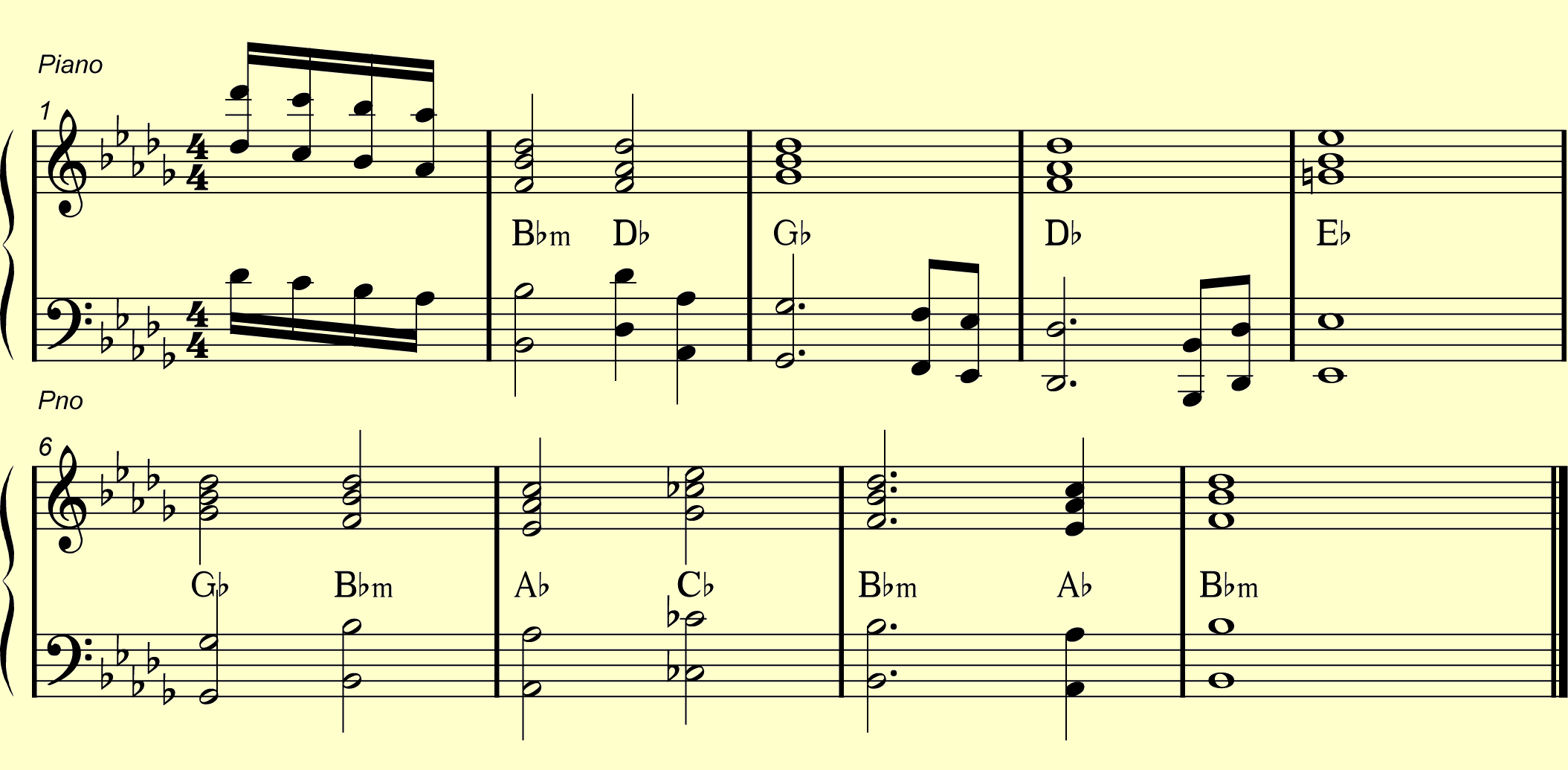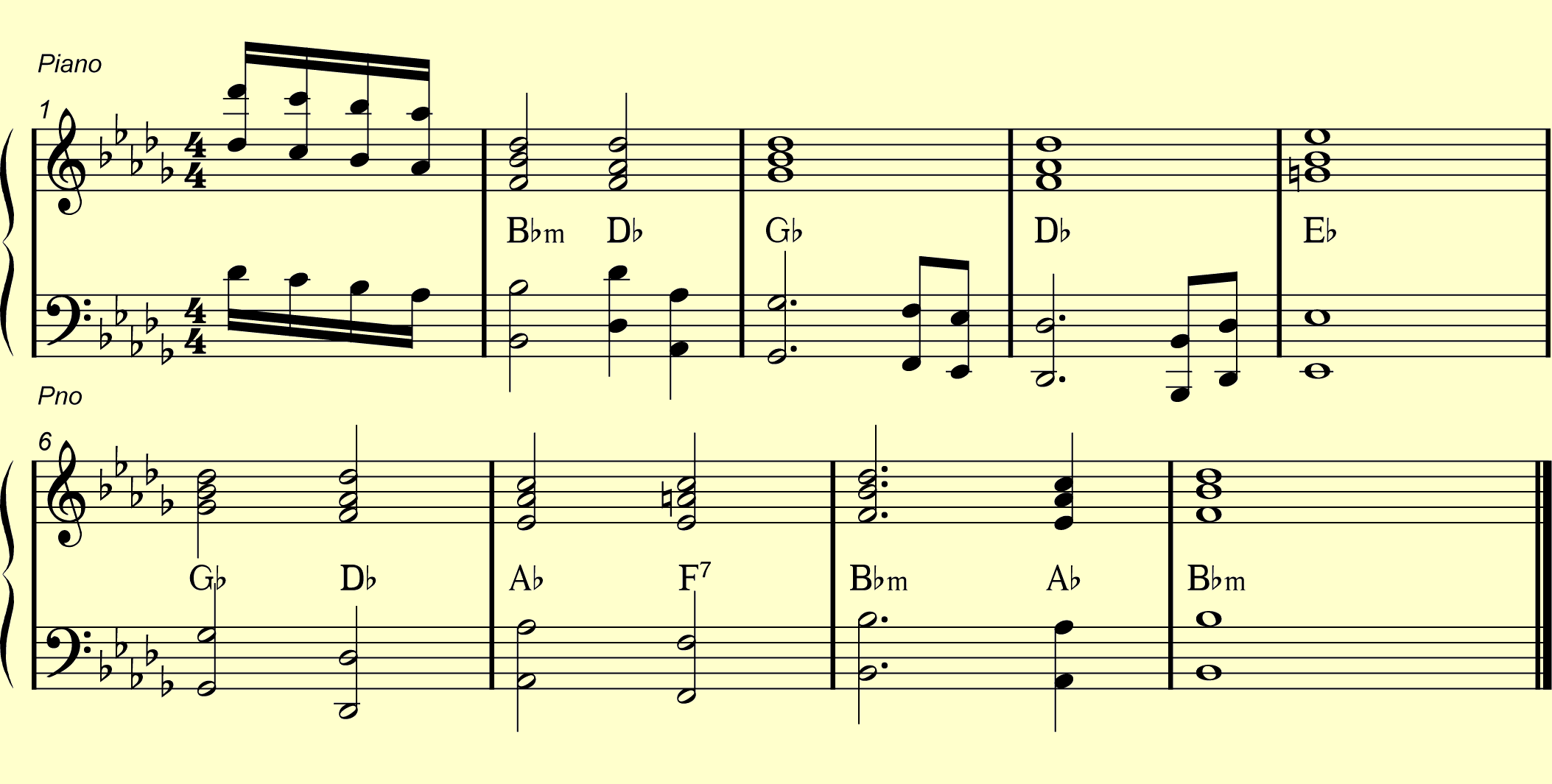This is probably the most incredible beat I've ever heard in my life. I noticed that it is not the normal 4 bar chord progression format like most songs nowadays. This is actually an 8 bar chord progression. Can anybody figure out the chords? I want to try to play along with the song on my keyboard lol.
You are using an out of date browser. It may not display this or other websites correctly.
You should upgrade or use an alternative browser.
You should upgrade or use an alternative browser.
Chord Progression of "Free Masons" by Rick Ross
- Thread starter typhy
- Start date
quantumleap
New member
that beat is SICK...i never heard the song before, so this was my first time checkin it out...great production.
as for the chords...theres a couple guys here that are good at breaking the music down, providing chords and what not...i'm not one of them tho lol..YET
Good post tho
as for the chords...theres a couple guys here that are good at breaking the music down, providing chords and what not...i'm not one of them tho lol..YET
Good post tho
bandcoach
Zukatoku - Mod Scientist
This is probably the most incredible beat I've ever heard in my life. I noticed that it is not the normal 4 bar chord progression format like most songs nowadays. This is actually an 8 bar chord progression. Can anybody figure out the chords? I want to try to play along with the song on my keyboard lol.
Any challenge is appreciated.
In the end not too hard, just some borrowed chords and timing to get together on this one.
Key is Bb minor/Db major
Chords used are
Bbm ~ Bb-Db-F
Db ~ Db-F-Ab
Gb ~ Gb-Bb-Db
Eb ~ Eb-G-Bb
Ab ~ Ab-C-Eb
Cb ~ Cb-Eb-Gb
Notation

sounds like this
[mp3]http://www.bandcoach.org/fp/audio/freeMasons.mp3[/mp3]
Tempo is 96 or thereabouts
bandcoach
Zukatoku - Mod Scientist
Are you sure there are some borrowed chords in that song? Your sample doesn't sound exactly on point, and don't take it wrong, I greatly appreciate you taking your time out to figure the chords for me. Though, I don't think he uses any notes outside of the Bbm scale.
You were right to challenge the transcription - I have made two errors, the first was to use the relative minor of one chord, the other was to use a tritone substitution for the other. So, redoing the answer from scratch:
Uses one borrowed chord - Eb major
Key is Bb minor/Db major
Chords used are
Bbm ~ Bb-Db-F
Db ~ Db-F-Ab
Gb ~ Gb-Bb-Db
Eb ~ Eb-G-Bb
Ab ~ Ab-C-Eb
F7 ~ F-A-C-Eb
Notation

sounds like this
[mp3]http://www.bandcoach.org/fp/audio/freeMasons2.mp3[/mp3]
Tempo is 96 or thereabouts
Beautiful. I was wrong about not borrowing a chord. I loved that borrowed chord, it sounds so beautiful. Which leads to a question I now have. When is it a good time to se a borrowed chord? It sounds so perfect in this progression.
I wish I could come up with progressions like this, all my progressions either sound really happy like a children song or really sad and emo. Ugh, it's so frustrating.
I wish I could come up with progressions like this, all my progressions either sound really happy like a children song or really sad and emo. Ugh, it's so frustrating.
bandcoach
Zukatoku - Mod Scientist
Beautiful. I was wrong about not borrowing a chord. I loved that borrowed chord, it sounds so beautiful. Which leads to a question I now have. When is it a good time to se a borrowed chord? It sounds so perfect in this progression.
Sometimes it is a case of suck and see, particularly in pop music. With this particular chord, the minor version of it is ok, but the major version just makes it ring out - in fact I am left thinking that the Db-Eb is actually an attempt to modulate to Ab, which is defeated when we return to the Gb.
We can consider the internal key relationships in Bb minor as
bb: i-III-bVI-III-IV-bVI-III-bVII-V7-i-bVII-i
So the Eb is borrowed from the Melodic minor or the tonic major of Bb (chord IV in Bb is Eb)
or in Db major as
Db:vi-I-IV-I-II-IV-I-V-III7-vi-V-vi
Here we see the Eb as II (V-of-V), suggesting that it is a partial or incomplete modulation or turnaround. We also the F7 as V-of-vi, which we also know from the Bb minor relationships.
We usually hear the II major in the context of I-V-I-IV-I-II-V-I ~ D-A-D-G-D-E-A-D
We can consider the internal key relationships in Bb minor as
bb: i-III-bVI-III-IV-bVI-III-bVII-V7-i-bVII-i
So the Eb is borrowed from the Melodic minor or the tonic major of Bb (chord IV in Bb is Eb)
Ok, I'm trying to understand this, lol, it's confusing me. Let's just stick to the Bb minor scale for now, which the notes of the scale are:
Bb - C - Db - Eb - F - Gb - Ab
the chord progression goes:
i - III - VI - III - IV - VI - III - VII - V - i - VII - i
the IV chord is borrowed from the Bb Major scale (the parallel scale, correct?). From what I understand, the only chords that can be borrowed from its parallel scale in this case would be chords: i, iv, and v right? Is it because the only difference between those chords in Bb minor and Bb Major are the flatted thirds?
How come in your progression you label it as: i-III-bVI-III-IV-bVI-III-bVII-V7-i-bVII-i
Why do you have the "b" in front of the VI and VII chords?
bandcoach
Zukatoku - Mod Scientist
OK, first up you are using the natural minor scale.Ok, I'm trying to understand this, lol, it's confusing me. Let's just stick to the Bb minor scale for now, which the notes of the scale are:
Bb - C - Db - Eb - F - Gb - Ab
Chords in the minor are derived from the Harmonic Minor:
Bb-C-Db-Eb-Gb-A-Bb
otherwise you cannot have F as a naturally occurring chord in the key of Bb minor.
the chord progression goes:
i - III - VI - III - IV - VI - III - VII - V - i - VII - i
the IV chord is borrowed from the Bb Major scale (the parallel scale, correct?). From what I understand, the only chords that can be borrowed from its parallel scale in this case would be chords: i, iv, and v right? Is it because the only difference between those chords in Bb minor and Bb Major are the flatted thirds?
Borrowing chords from parallel (many refer to this as the tonic major) or other scales is entirely at the whim of the composer.
The chords you would borrow would be I and IV, as V already exists because of the harmonic minor usage in constructing chords. It is also possible to borrow chords ii, iii and vi. You could also use their major counterparts in the context of secondary dominants (read the whole thread as there is quite a bit that explains the concept).
How come in your progression you label it as: i-III-bVI-III-IV-bVI-III-bVII-V7-i-bVII-i
Why do you have the "b" in front of the VI and VII chords?
We name chords according to their relationship to the relative major scale. So, when we have the minor scale we automatically have b3, b6 and b7 as scale tones, so we also automatically have bIII, bVI and bVII as chords

Coach, just wanted to take a quick second out to personally thank you for the brass and pianos transcriptions you've done over the entire course of 2011.
I would say you are personally responsible for about 4-6 records in my music production library. I've "unlocked" a lot of things due to those transcriptions
!
I would say you are personally responsible for about 4-6 records in my music production library. I've "unlocked" a lot of things due to those transcriptions
!
